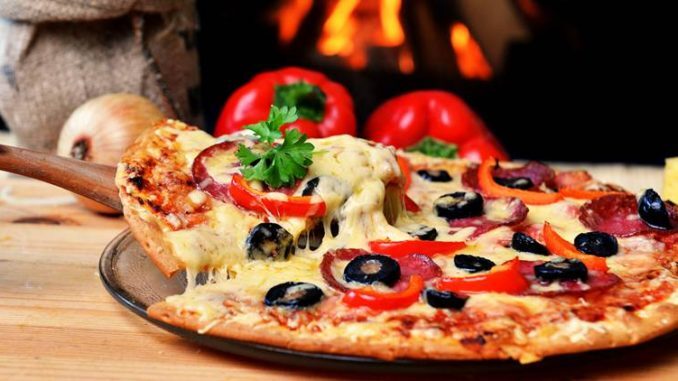
Are you an MMA fighter looking to take your performance to the next level? Fueling your body with the right amount of calories is crucial to optimize your training and maximizing your potential in the octagon.
Mixed martial arts combines various disciplines such as boxing, wrestling, kickboxing, and Brazilian jiu-jitsu. Despite its recent surge in popularity, it’s an exhausting physical sport.
Fighters must devote hours to training their skills and strengthening their bodies with cardio and weight training. Proper nutrition is crucial to meet their high demands for nutrients and calories.
From calculating your individual needs to optimizing your diet, we’ll give you the tools you need to elevate your game and reach your full potential as a fighter.
So let’s dive in and fuel up for success!
The Right Fuel for Fighters

Manny Pacquiao, known as the Pac-Man, is certainly one of the most celebrated boxers in the history of the sport (1):
“Pacquiao burns up to 7,000 calories a day during training and has to eat six meals a day to fuel and repair his body”. He consumes about 7000 to 8000 calories a day including five protein shakes.
An MMA fighter has to be in his prime at the right time on the fight night. Unlike other professional athletes, MMA fighters get only a few chances in a year to prove their mettle.
One botched fight can have huge implications for their career and life. Diet plays a crucial role in an MMA fighter’s life the same way as the rigorous training sessions they undergo.
Planning and following nutritionally balanced diets is not just limited to the training sessions. Even the fight night intake is very much under scrutiny.
Be it pre-workout meals, nitrate-rich fluids just 90 minutes prior to the rounds, or a recovery shake after the tough sessions, all have to be taken in the right amounts to enhance their performance and ensure that the martial artist is in top form and primed for fighting.
Top-achieving Mixed Martial Artists are counted among the fittest athletes and this is partly due to their commitment to clean eating. They must be faster, more powerful, and more agile than their opponents to win their fights.
Therefore, an MMA fighter’s diet has to provide sufficient fuel for punishing workouts and at the same time, it must be refined in its calorie balance to ensure he will not end up having to unexpectedly shift his weight group.
At times a fighter needs to increase their weight to get into a heavier class and in reverse, sometimes they would need to decrease their calorie consumption accordingly while not sacrificing their muscle tissue and strength.
It is optimal that a fighter has to maintain this maximal power-to-weight ratio throughout. All this depends on the right dietary intake.
Read more: MMA Fighters: Beginner’s Guide to Meal Planning
So, what is the right fuel for a fighter? The fuel comes in various sizes and forms, but it is basically in the form of calories.
Being fighters, to stay on track and become their best, it is most important for martial artists to understand their calorie requirements based on their expenditure expense.
So what exactly is the science behind calories?
What are Calories?
Researcher Kelly Brownell, a professor of psychology at Yale University in New Haven says:
“Just like a quart is a measurement of volume and an inch is a measurement of length, a calorie is a measurement or unit of energy,”
The number of calories in the foods consumed is a measure of the number of energy units that food provides. These energy units will be used up by the body to fuel physical activities.
The metabolic processes, from maintaining the heartbeat, and growing hair to healing a scraped knee, and building muscle all come as a result of these energy units.
Calorie Requirements
With strenuous exercises, caloric needs generally jump to 18 calories per pound of body weight, and it is regardless of your gender.
For example, a 130-pound active woman needs 2,340 calories to maintain her weight, while a 175-pound man requires 3,150 calories daily.
But tough athletes like MMA fighters need additional calories.
Female athletes require 20 to 23 calories per pound of their body weight daily, while male athletes may need more than 22.7 calories per pound of their body weight.
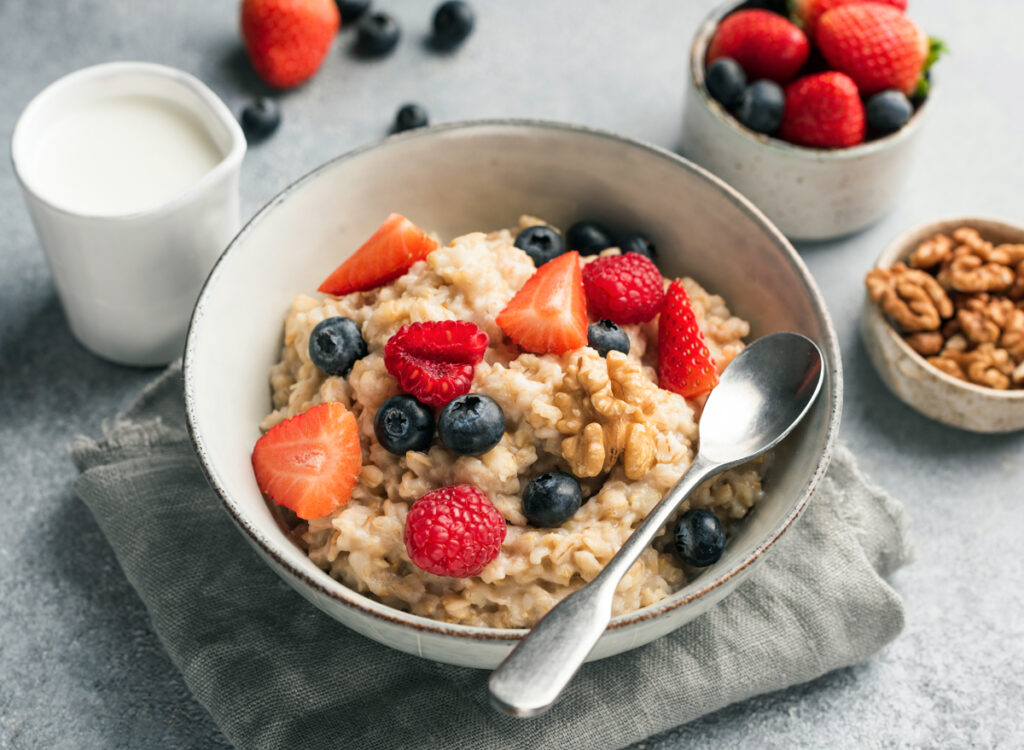
Alexa Ariza, Pacquaio’s strength and conditioning coach said:
“My favorite meal for my fighters and myself is the post-workout meal: Raw oatmeal, nonfat milk, fresh berries, and honey. It’s slow-cooked in milk; the oats absorb the honey and that’s proven to be the best meal for fast recovery during camp.”
In addition to the carbs from oatmeal, Pacquiao has a post-workout meal with 30 grams of protein in a drink made from two scoops of Designer Whey protein mixed with water.
The oatmeal is really just an appetizer that fuels more grueling workouts and leads up to a second post-training meal that features one of the champ’s favorite foods.
A second post-workout meal of beef tapa, a Philipino dish of thin strips of sirloin cured in sugar, soy sauce, garlic, and black pepper that’s boiled and fried.

Sides include steamed white rice, tinolang manok, a chicken-based soup with ginger and greens, and a plate of melon and mango. Ariza explains:
“Pacquiao’s calories are through the roof, so he can put in the same intensity the next day and not burn out. If he’s not hitting those calories, he’s burning muscle -and he can’t afford to do that.“
Calorie Expenditure
Obviously, the average martial artist does not train or fight like Pac-man. On average, the calories used by an MMA fighter during practice sessions will be 900-1000k cal/hour.
Considering a practice session that lasts approximately 2 hours, this is equal to 1800-2000k cal per practice session.
An average fighter’s BMR should also be taken into consideration here. BMR refers to Basal Metabolic Rate which is the energy expended by the body at rest to maintain its normal bodily functions such as organs’ function, respiration, the healing process, building muscles, and so on.
This will add up to an approximate figure of 2000 kcal/day.
Not to forget the daily other activities outside of the gym a fighter may have, it is fair to say that the average calorie requirement for a fighter training 2 hours a day will be between 4500-5000k cal/day.
The question of concern then is, how to meet such high-calorie requirements? It is highly recommended in this scenario that a fighter keep track of calories consumed.
Theoretically, eating fewer calories than expended will result in losing weight, but the type of calories eaten influences the results.
If fighters don’t eat enough calories from fat or carbs to power their workouts, they could end up burning fewer calories than they think, because they’re not able to give it their all in a training or sparring session.

American professional boxer and former kickboxer, Chris Algieri is the undefeated ISKA World welterweight and WKA World super welterweight champion.
Other than boxing, Algieri also works as a nutritionist. To prime athletes for sparring Algieri says:
“It’s a simulation of fight night, so we fuel like they’re getting ready for an actual fight. Carbs are a mainstay. It gives them sustained energy for the session.”
He starts them off with a pre-meal of oatmeal or toast, fruit, and 2-4 eggs around four hours before the fight.
Since sparring sessions last from 60 to 90 minutes and since fighters don’t eat during the session, they should be primed with the right fuel beforehand.
Calorie Intake from Various Sources
The main four components of food that supply calories are protein and carbohydrates (4 calories per gram), Alcohol (7 calories per gram), and Fat (9 calories per gram).
Other nutrients such as vitamins, minerals, phytochemicals, fiber, and water do not supply calories.
Macronutrients such as fats, proteins, and carbohydrates are all metabolized differently and are converted into body weight with different rates of efficiency.
Allowing 4500 to 5000k cal/day into the body requires effort and diligence if fighters want to be at their best.
But this massive calorie allowance should not be treated as a license to eat whatever and whenever they want.
Proteins
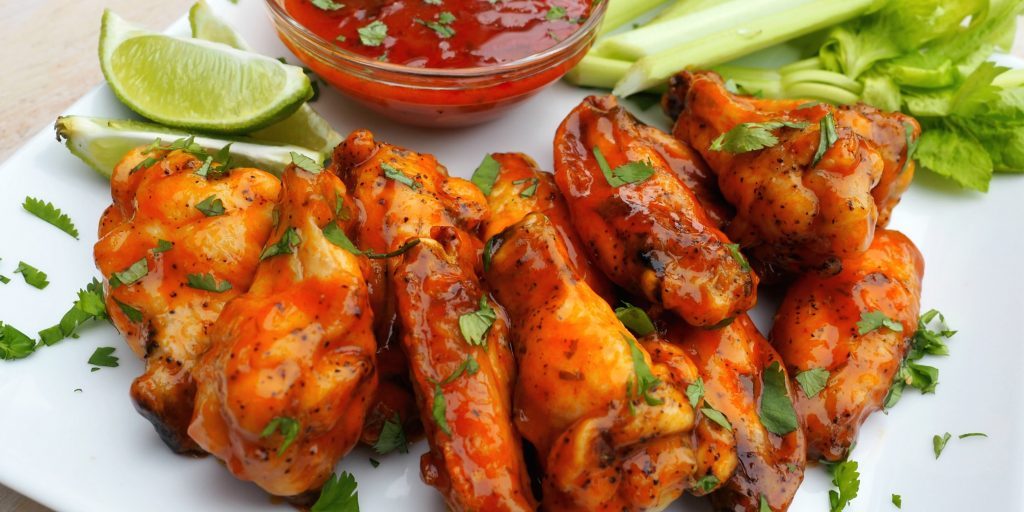
Protein builds muscle and maintains other body tissue while fat provides energy, regulates hormone production, and keeps a person feeling full.
Here the main focus should be on high-quality protein sources. This should preferably be from high-quality animal, nuts, and plant sources and not in powder or bar form.
Protein supplements do have their place, but it’s best if the protein requirements are met from natural sources.
Supplements tend to be highly processed, overly hyped, and overpriced. They might also be sugary substitutes for good quality foods.
If supplements are to be included in the dietary plan, then a thorough understanding of ‘dietary supplements for fighters’ is required.
Even if the protein is from food sources, its quality must also be a concern. Building up high-quality, strong tissue in the body requires high-quality healthy food.
Organic, free-range sources are the best as they are devoid of antibiotics, hormones, and harmful chemical residues which can cause harm within the body.
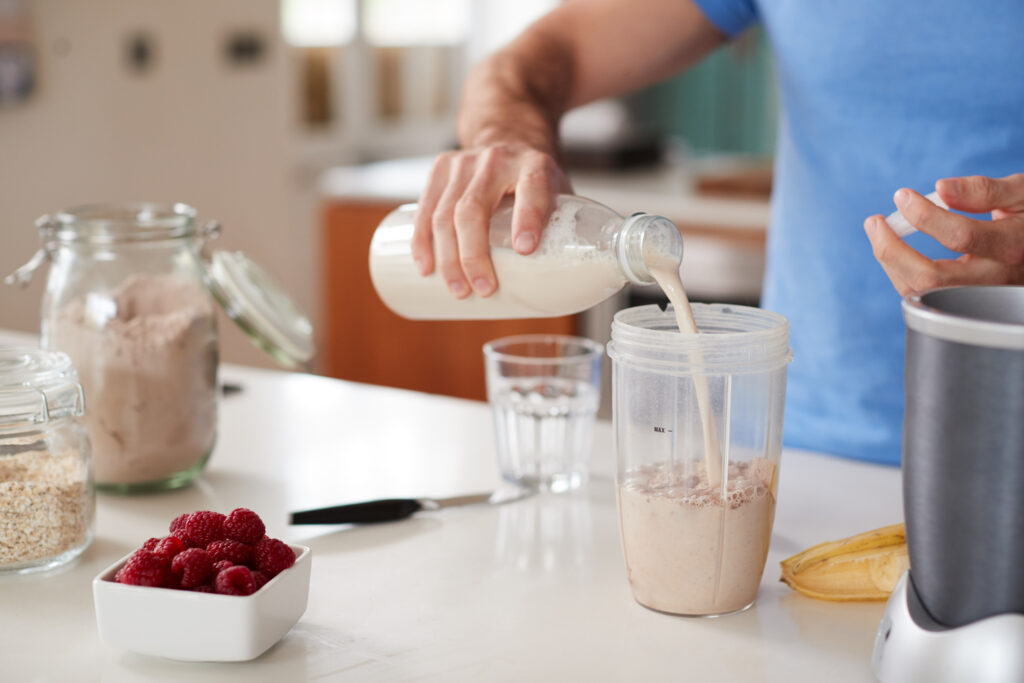
Chris Algieri insists on a whey protein shake and some tart cherry juice within 30 minutes of finishing a tough training session.
Chris Algieri recommends:
- tart cherry juice as it has anti-inflammatory properties.
- having plenty of protein for dinner as they help muscles recover faster.
- changing the protein source every night.
- switching between salmon, shrimp, roasted chicken, and sushi for daily dinners
- having some red meat once or twice a week.
Pairing the protein with healthy sides like rice and vegetables like dark, leafy greens like spinach, kale, and broccoli helps create a balanced and nutritious meal.
Carbohydrates
Carbohydrates are another important macronutrient for fighters. They are best consumed in the form of vegetables, fruits, and high-quality gluten-free grains.
The quick burst of energy an MMA fighter needs during a fight mainly relies upon this source – carbohydrates!
Swift, yet powerful movements required throughout the fight demand high amounts of stored energy. This maximum intake potential is approx 2000kcal at any given time, though it differs from individual to individual (2).
Carbohydrates also provide energy and help you sleep better at night.
Generally, the body can store 1300-2,100 kcal as glycogen reserves within the skeletal muscle and liver.
Keeping intake in these structures maximized keeps a fighter powerful through their intense fights and training sessions.

Carbs from vegetables such as potatoes, fruits, and whole grains provide the fiber needed to assimilate and digest the massive amounts of food a fighter has to intake.
Carbohydrates should make up the majority (50-65%)of a fighter’s nutritional intake since it is their main fuel.
Organic corn, rice, millet, or buckwheat products can be included in a fighter’s routine diet in place of highly processed products such as bread and pasta.
Processed foods, especially the ones made with refined flour, contain chemical residues, gluten, and many other non-foods that can actually harm the digestive system and decrease general health and vitality.
High-Quality Fats
These pack a considerable amount of calories per gram (1 gram=9 calories). It is indeed a great way to pack in calories through fats.
Fats are well known for their potential of storing energy modules in them. Thus this macronutrient becomes really important for a fighter to sustain through long-duration practice sessions and fights because it serves as a vital energy supply at those times.
Although most fighters carry sufficient amounts of fat stored in their body, they also need adequate fat intake for healthy cell/tissue maintenance.
Strong cells make up healthy tissues which make an athlete healthier and stronger.

Meat sources such as beef or chicken thighs contain saturated fat. It is highly desirable to the body since much of our cell structure is mainly composed of saturated fat.
High-quality fish oils, fatty fish, and organic butter are just a few other easily accessible and beneficial fat sources a fighter should include in his diet regime.
Empty Calories
A can of soda and a 4-oz. skinless chicken breast have somewhat about the same number of calories (3), (4).
So is it wise to replace chicken breast with a can of soda? Absolutely, not! One is pure sugar, and the other is loaded with protein.
It’s important to invest in calories wisely and limit anything that’s primarily sugar or starchy carbs to maximize quality nutrient intake.
Sugary processed foods should not be part of a fighter’s diet, and for that matter, anyone’s diet. By sugary processed foods we mean processed supplements, highly-processed grain and dairy products, and sugary drinks.
Even packaged fruit juices tend to contain high amounts of added sugar.
The negative effects of these foods include reduced stamina, poor concentration, compromised muscle repair, and excessive body fat storage… to name a few.
Obviously, these are the last things fighters would want for themselves.
Body Weight Classes of MMA Fighters
For MMA fighters, their body weight is an important factor for many reasons. As in boxing and wrestling, in MMA fighting also there are weight classes.
If fighters are weighing above their weight class, then they have to pay a fine. And, if they go under the weight bar of a weight class, they are at the disadvantage of being outweighed.
Quite often, fighters get confused between ‘cutting weight’ and ‘losing weight’.
Cutting weight is mainly losing mostly water to stay at a weight limit whereas losing weight refers to losing body fat. Losing weight involves cutting caloric intake and increasing energy expenditure to burn up body fat.
When cutting weight, a fighter loses about five to ten pounds in 24 hours. If a fighter is not ten pounds or less at the time of the after-24-hour weigh-in, then it’s evident they failed to diet properly.
Cutting water weight can end up being very dangerous and in extreme cases, there is a possibility of heart attack or kidney failure.
If a fighter has to drop 30 pounds for a fight, it requires both losing weight and cutting water weight.
According to Chris Algieri:
“Fighters are always in a catabolic state. And it’s really tough to make strength, endurance, and power goals if they aren’t getting enough calories. But if an MMA fighter isn’t the right weight, he doesn’t fight.
It’s a difficult and delicate balance between making sure guys are eating enough to continue to make progress in training and not gaining too much weight to disqualify themselves.”
How to Calculate Current Calorie Intake
Most fighters consume much more or much less than they think they do. The only way to really find is to actually record the food intake and do the necessary calculations.
A fighter who is serious about improving his performance needs to put a little more effort into ensuring his calorie needs are met correctly.
An experienced professional fighter probably has enough experience to know how to stay on track, what to eat, and when to have it.
But for a beginner, this can be quite taxing. Be a beginner or a pro, a martial artist should know how many calories they are currently consuming.
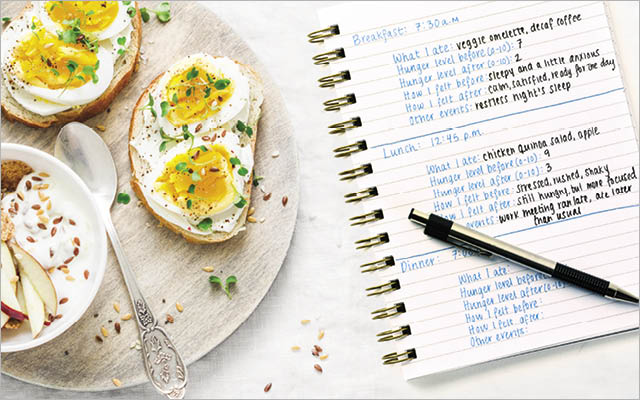
Keep a food journal to track the calories for everything eaten during a period, maybe for a full week including the weekends.
Note the calorie count for each food item, then tally the total calories and divide by the number of days tracked to find the daily average.
Fighters can rely on online trackers as well to easily calculate and know where they stand in terms of their calorie intake.
How to Gain Weight for MMA
Sounds crazy, but short-term weight regulation is not that uncommon among MMA fighters.
It is quite natural for a mixed martial arts fighter to gain or lose weight so as to qualify for fights based on certain weight classes.
In fact, a small segment of fighters will be there who focus on gaining weight to fight in their chosen weight class.
Carefully regulating the nutrition and training in the weeks leading up to a fight can build up smart fighters. Though a daunting task, with some basic guidelines and diligence it is possible to effectively gain the desired weight.
Determining the calorie count being burned at rest and during training helps. If more calories are burned than taken in, then no weight gain happens!
Use an online calculator to calculate the resting metabolic rate based on height, weight, activity level, and lean mass-to-fat ratio. To that number, add 500 to 1,000 calories per day based on how much weight gain is desired.
A reduction in aerobic training also helps in avoiding extra calories being burned up. Up. Increase carbohydrate and fat intake to eat more energy-dense foods. Avoid refined white flour products and sugary junk foods.
Consume unsaturated oils such as olive, sesame, sunflower, safflower, and walnut. Peanut butter is another great energy-dense option. It contains about 210 calories per 2 tablespoons.

Increase the portion sizes to meet the target intake. Calculate and plan how many calories should be consumed at each meal.
For example, if fighters have to take 3,500 calories daily to gain weight, then they should eat five 700-calorie meals, or six 580-calorie meals, and thus portion out and reschedule their nutritional plan.
Losing Bodyweight Among MMA Athletes
Having said that, gaining weight is rare among fighters, and it is quite clear that cutting down weight is a much more common act.
A fighter’s weight is directly proportional to the calories consumed throughout the day. So the rule is simple: To lose weight, there should be a deficit in calories consumed compared to calories expended.
Again, to find out the number of calories to be cut in their diets, fighters need to monitor their intake closely. In order to lose one pound of fat, they would need to burn 3,500 calories! Not that easy.
According to the National Institutes of Health, an effective way to shed weight safely is to cut 500 calories from the diet each day. With this method, the ideal weight loss would be about 1 pound per week.
Summing it all up…
Mexican-American Cecilio Flores a renowned nutritionist who has worked with many international boxers revealed that:
“Of all the world boxing champions I worked with, only Pacquiao and Martinez are almost the same in terms of discipline and hard work in training. Their energy level and dedication are just so amazing,”
It is clear that dedication to training and dietary intake are key to success as an MMA fighter. It is very important that fighters recognize the need to regulate calorie intake not only during training days but also during off times.
Those training with 2-hour regimes requires an additional average of 2000 kcal/day on the days they train. This is above the basic calorie requirements calculated using individual BMR and daily activity levels.
To move up or down in weight class, fighters must adjust their calorie intake accordingly. Generally, a deficit or surplus of 500 kcal per day will produce a 1lb loss or gain over the course of a week.
Avoid synthetic supplements and processed food as they may harm the digestive system and decrease a fighter’s overall vitality. There are indeed plenty of good supplements, but an effort should be made to understand which supplements are actually useful and safe to consume.
The source of calories should be high-quality macronutrients such as free-range, organic meat products, vegetables, and fruits.
Protein intake for a fighter should be approx 2.1-2.5 grams per kg of body weight depending on the intensity of exercise. Carbohydrates provide the fuel for quick, explosive dynamic movement.
Finally, fats serve as a great long-term reserve fuel source. Taking in 50-100 grams of good quality fats such as fish oils, butter, and nuts in combination with meals will provide good nutrition and approximately 500-750 kcal. Fats not only make the food taste much better, but they also help fighters easily meet their high caloric requirements.
Read more: Everything You Need to Know About Weight Loss and Weight Cutting
